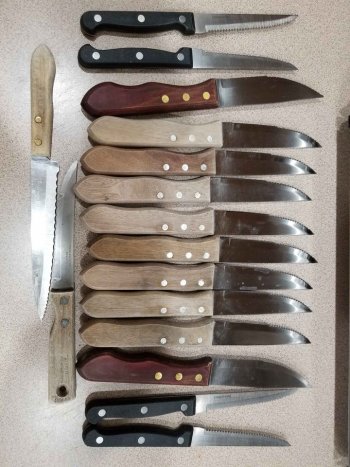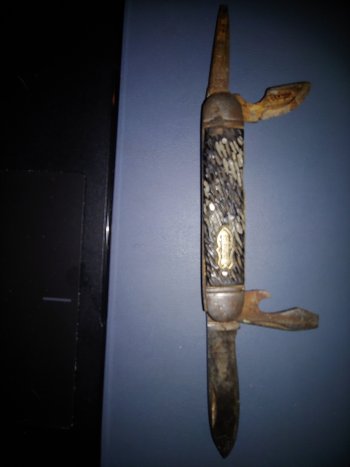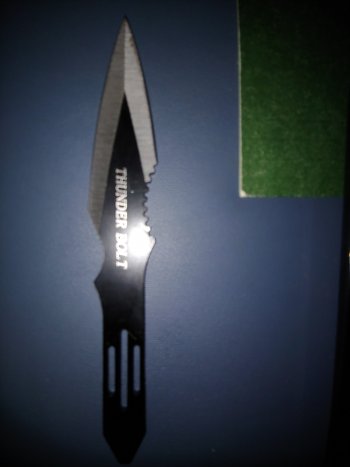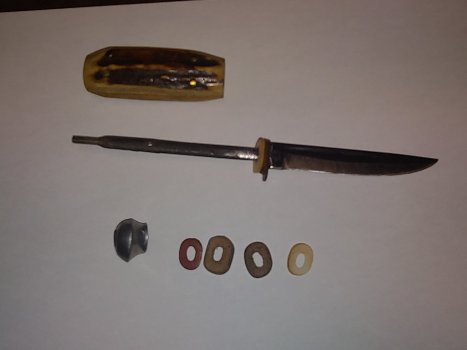John Wilson
Well-Known Member
A lot of production steak knives have rivets versus pins. No biggie. Just drill them out or grind the heads off. You can use anything for pins, especially for practice. The blades will be hardened so you won’t have any luck drilling the pin holes bigger (unless you put a propane torch to the pin hole areas to anneal the steel).
They may have partial tangs. You can tell because the handle will only have a partial slot on one side, right in line with the pins / rivets and there won’t be any slot or pin down at the butt end. These are fine, too. Turn them into hidden tang knives for practice.
The world is your oyster. Go crazy!
They may have partial tangs. You can tell because the handle will only have a partial slot on one side, right in line with the pins / rivets and there won’t be any slot or pin down at the butt end. These are fine, too. Turn them into hidden tang knives for practice.
The world is your oyster. Go crazy!




